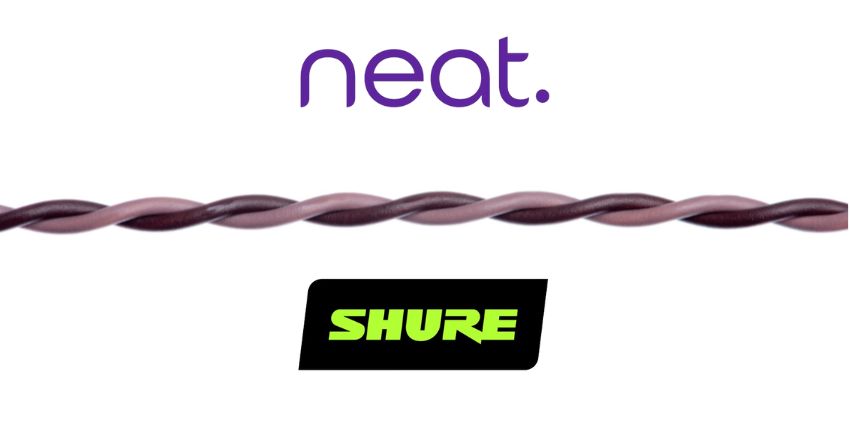The versatility of Microsoft Teams enables it to go above and beyond orthodox UC and collaboration software. There are myriad compatibility options for deskphones and displays to enhance the user experience and, from a leader’s perspective, streamline workflows, boost productivity and improve performance.
However, selecting the best and most fitting Teams deskphones and displays hardware to match the specific needs of your business is a challenge. There are a plethora of touchscreen deskphones, countless collaboration displays, distinctive video conferencing products and Teams-compatible IP phones to choose from.
With our latest Round Table subject, “Teams Deskphones and Displays“, we spoke with experts and executives from Yealink, Audiocodes and Neat about how Teams deskphones and displays hardware enhance the Teams user experience, the opportunities created by the hardware to streamline communication workflows, and what specific features businesses should look out for when investing in this hardware.
How do Microsoft Teams deskphones and displays hardware enhance the overall user experience of the platform?
Sherri Pipala, Senior Director Global Microsoft Alliance at Neat
Pipala highlighted that with so much of our time spent on calls, a dedicated personal device that can deliver both video and calling with Teams is invaluable. “Beyond video meetings and phone calls,” Pipala said, “Microsoft Teams displays like Neat Frame allow you to pair with your laptop, which frees it up for other tasks. For example, interacting with Teams Chat, opening and viewing OneDrive files and viewing content allows users to have not just a great experience but also helps them be more productive.”
Vincent Gao, Principle Product Manager – Teams Device Solution at Yealink
Gao suggested Yealink’s range of solutions designed to empower users: “Our Phone follows market demands and provides a traditional handset experience for dialling and answering calls, along with the convenience of interactive experiences through physical buttons. Additionally, the Phone is compatible with third-party SBCs and, together with Microsoft, offers a complete solution for Direct Routing or Operate Connect, catering to different PBX usage scenarios.”
“Lastly, we offer a comprehensive option, ranging from entry-level Non-touch Phones to high-end Video Phones and Conference Phones, meeting the full range of user voice communication needs,” Gao continued.
Nati Davidi, VP, IPP Solution & Devices Biz Line at AudioCodes
Davidi argued that Native Teams phones and displays could be used as complementary options to the Teams app on PC because they provide meeting displays with high-quality audio with the option to manage mute and roster while using the PC app for sharing and video. “As many users need audio devices,” Davidi explained, “having a Native phone enables having the meeting info always visible while on the PC the user can continue to work on other tasks or add the PC sharing mode only into the same meeting.”
Davidi added that for hybrid offices, IT might have displays and phones as shared devices so users can easily hot desk or use them for ad-hoc meetings, either as their own user profile or as a shared user provided by IT admins. “As the phones are fully managed, it enables IT to monitor them,” Davidi said. “While having an un-managed USB device — like headset or speaker — is not as cost-effective in shared office as those get ‘lost’. So users that need a device (not a personal headset) can use a shared phone or display.”
What opportunities do Microsoft Teams deskphones and displays hardware provide for businesses looking to streamline their communication workflows?
 Vincent Gao, Principle Product Manager – Teams Device Solution at Yealink
Vincent Gao, Principle Product Manager – Teams Device Solution at Yealink
Gao namechecks hotdesking as a trend as people begin returning to the office following the pandemic. “Working on a shared desk, people need internet, power, a video phone or other video conferencing devices, and access to their personal files,” Gao elaborated.
“DeskVision A24 gets things done with an elegant all-in-one design, making the desk clean than ever. It is the first product on the market to be certified as a Teams Display, Teams Monitor, and Teams Room device. It caters to the usage scenarios of Hot Desking in Shared Spaces, Personal use, and Phone Rooms.”
Gao explained that when workers come in with a laptop, all resources can be connected to the laptop with a USB-C cable. “A shared desk becomes a personalized workspace in seconds,” he added. “The product is designed for seamless integration and supports one-touch switching between the native Android Teams mode and UC workstation mode.”
Sherri Pipala, Senior Director Global Microsoft Alliance at Neat
Pipala cited the personal use cases for Microsoft Displays but pointed out that other companies are looking at ways to support their collaboration needs by developing new ways of working, including phone booths, virtual front desk applications and industry-specific deployments.
“Hotdesking can reduce cost and streamline space optimization and utilization,” Pipala said, “virtual receptionist enables guest access allowing organizations to monitor their buildings and keep personnel safe, all while keeping costs down. A doctor managing multiple patients can triage and provide telehealth support, and a teacher can provide student lessons online. The possibilities are endless.”
“Having a device that can support home office, hybrid work, virtual receptionists, and industry use cases, to name a few, helps customers have the flexibility to deliver online meetings that feel decidedly more human,” Pipala added.
What features should organizations look for when choosing Microsoft Teams deskphones and displays hardware?
Nati Davidi, VP, IPP Solution & Devices Biz Line at AudioCodes
Davidi said that the “customer should define what type of persona and call cases are required and match the right device per each.” Admins that need to manage calls on behalf of the leader likely need a device with a “dedicated hard key for transfer and sidecar with the ability to see and connect many users,” Davidi added.
Davidi concluded by suggesting managers need a device with a large display with quality audio but without taking up too much space on the table.
Sherri Pipala, Senior Director Global Microsoft Alliance at Neat
Pipala commented that to support human interaction but also unique environments where displays can be deployed, organizations are just beginning to discover the use cases and observe the benefits of these devices: “Organizations should look for devices that support camera position at eye level, noise suppression, blue tooth headset support, automatic framing as well as the right form factor that fits into their environments.”
Vincent Gao, Principle Product Manager – Teams Device Solution at Yealink
Gao mentions three scenarios which a business user looking to invest in hardware might face. The first is for those businesses considering Teams Display. Gao argued that these types of devices could be useful for shared workstations. “When choosing the hardware, employees should be able to reserve workstations and directly sign in to their Teams accounts for meetings,” Gao said. “DeskVision A24 provides such an experience allowing employees to work seamlessly in a shared space.”
For scenarios involving Teams Monitor, Gao highlighted that A24 serves as employees’ personal devices for daily use, functioning as a display: “USB-C cable can simultaneously provide power, network connection, USB hub, BYOD functionality, and an expandable touchscreen experience.”
For Teams Room, Gao pointed out that A24 can be “deployed in 1-2 person Phone Rooms, supporting one-touch quick meeting initiation”.







